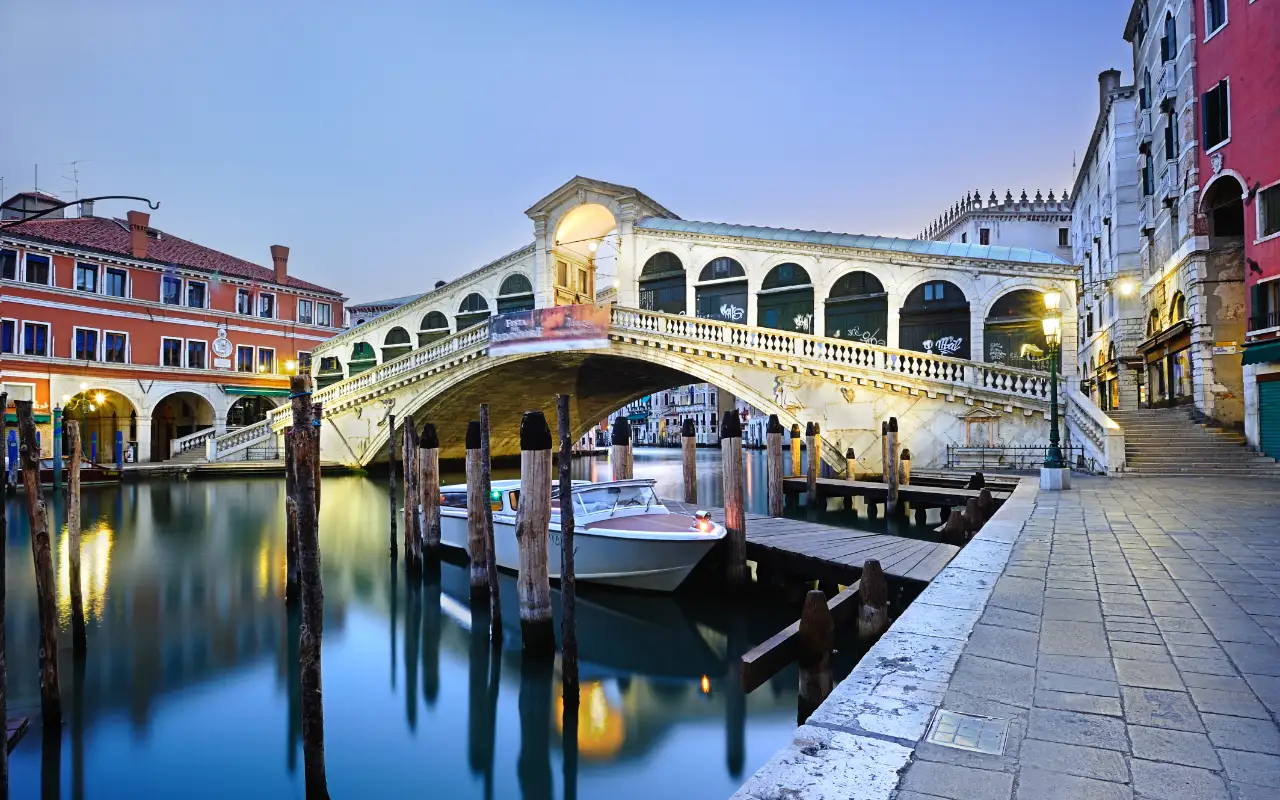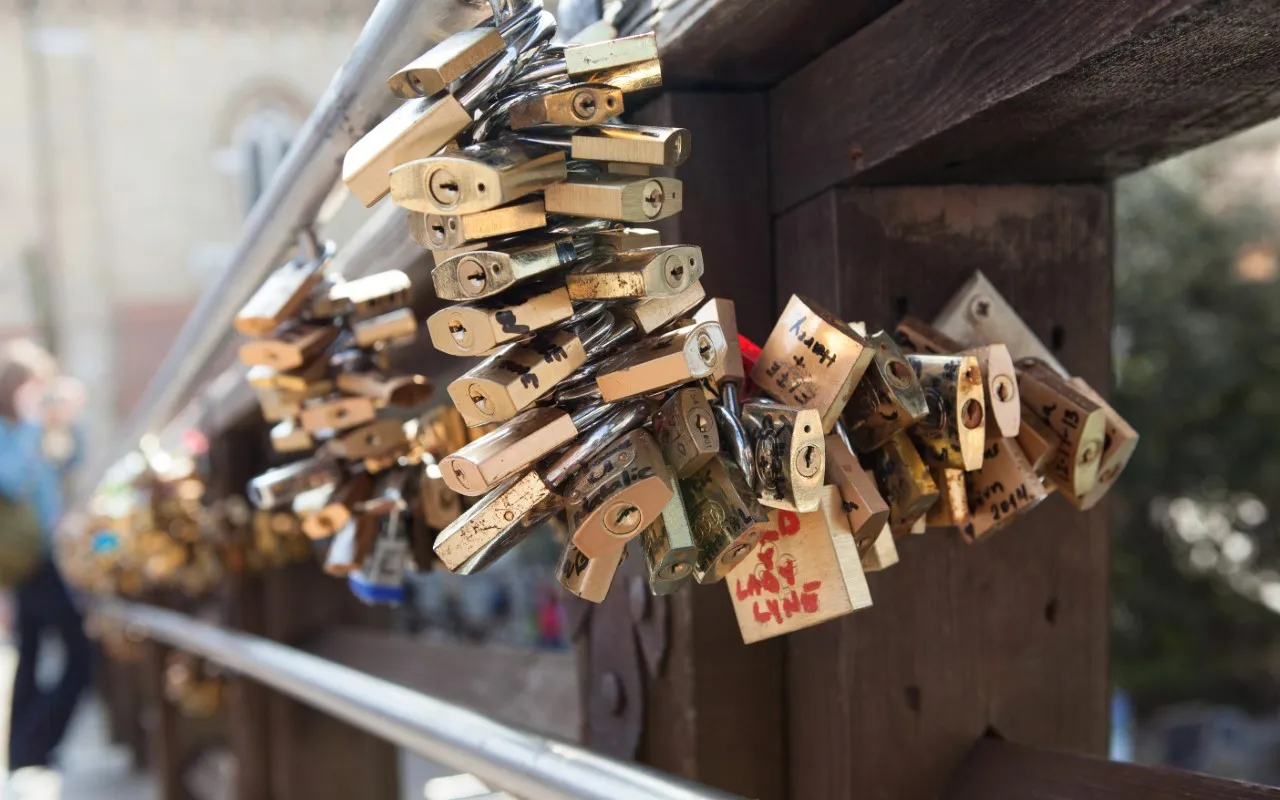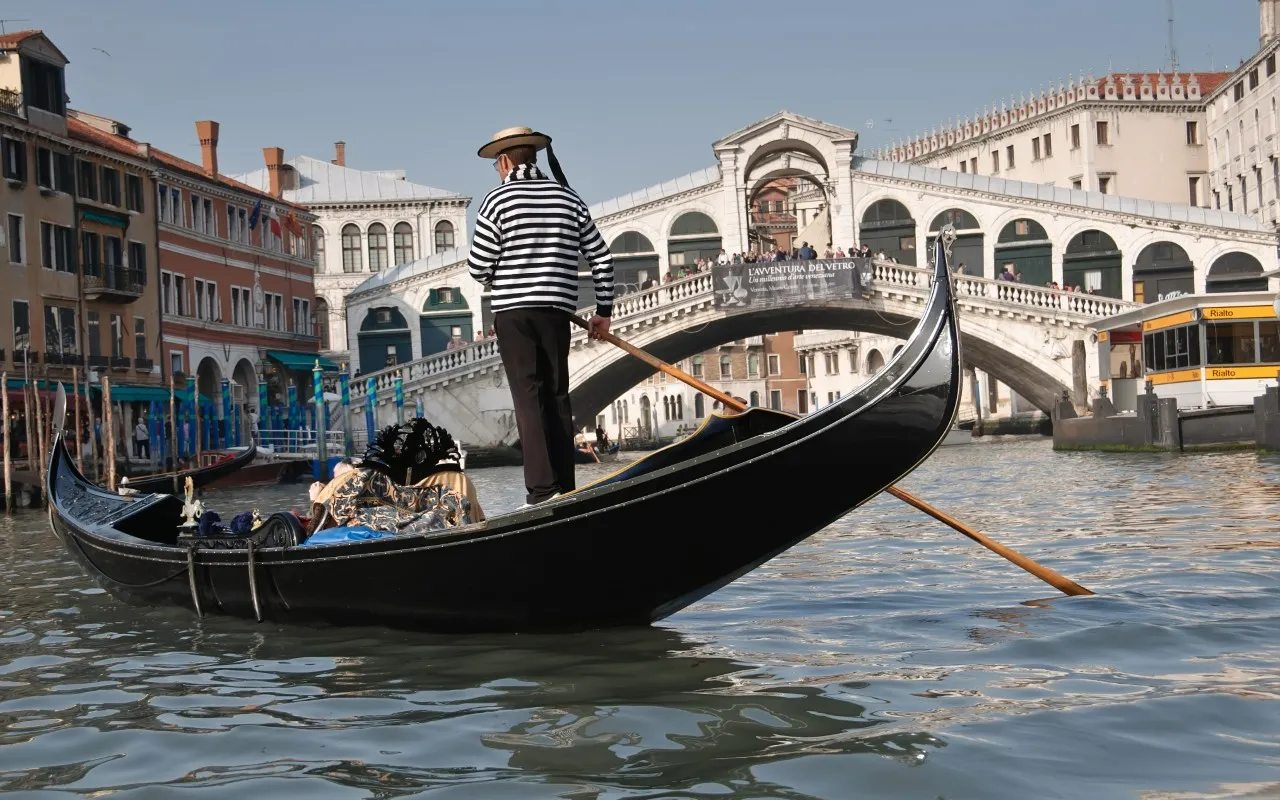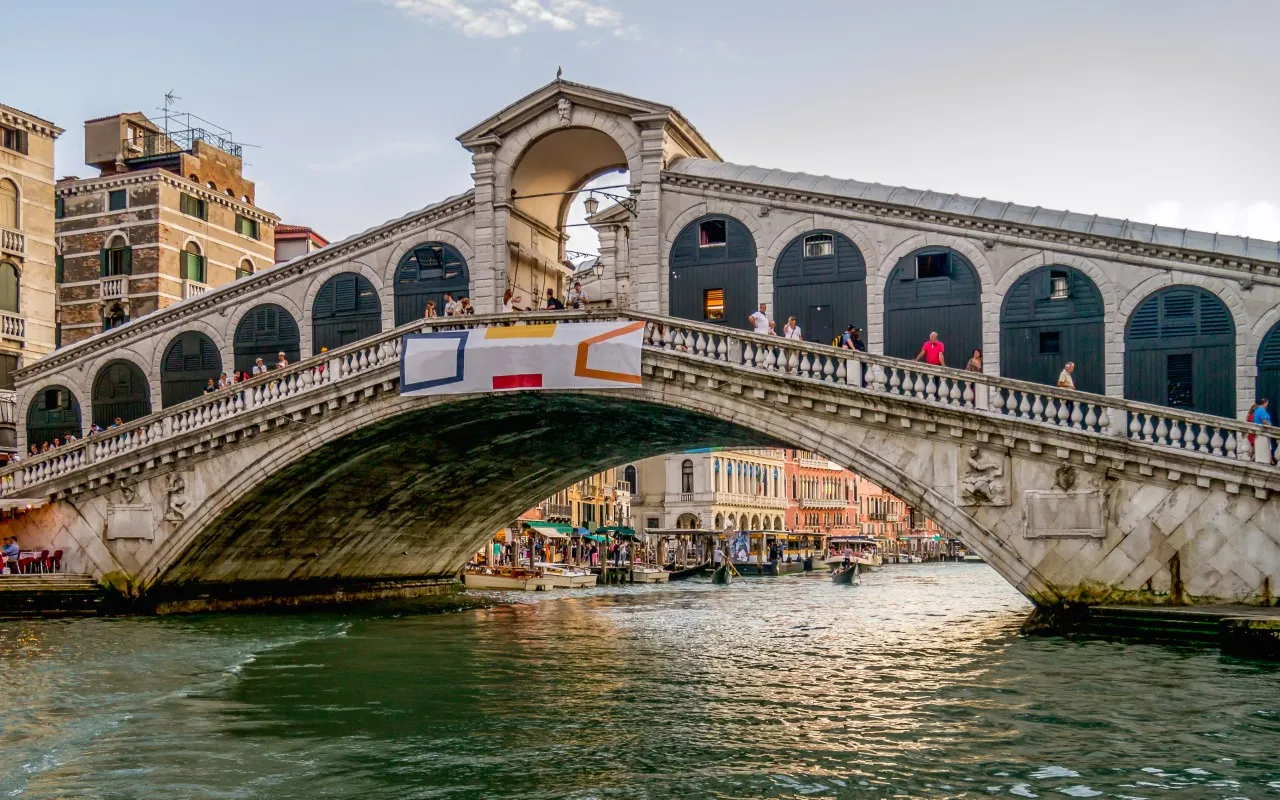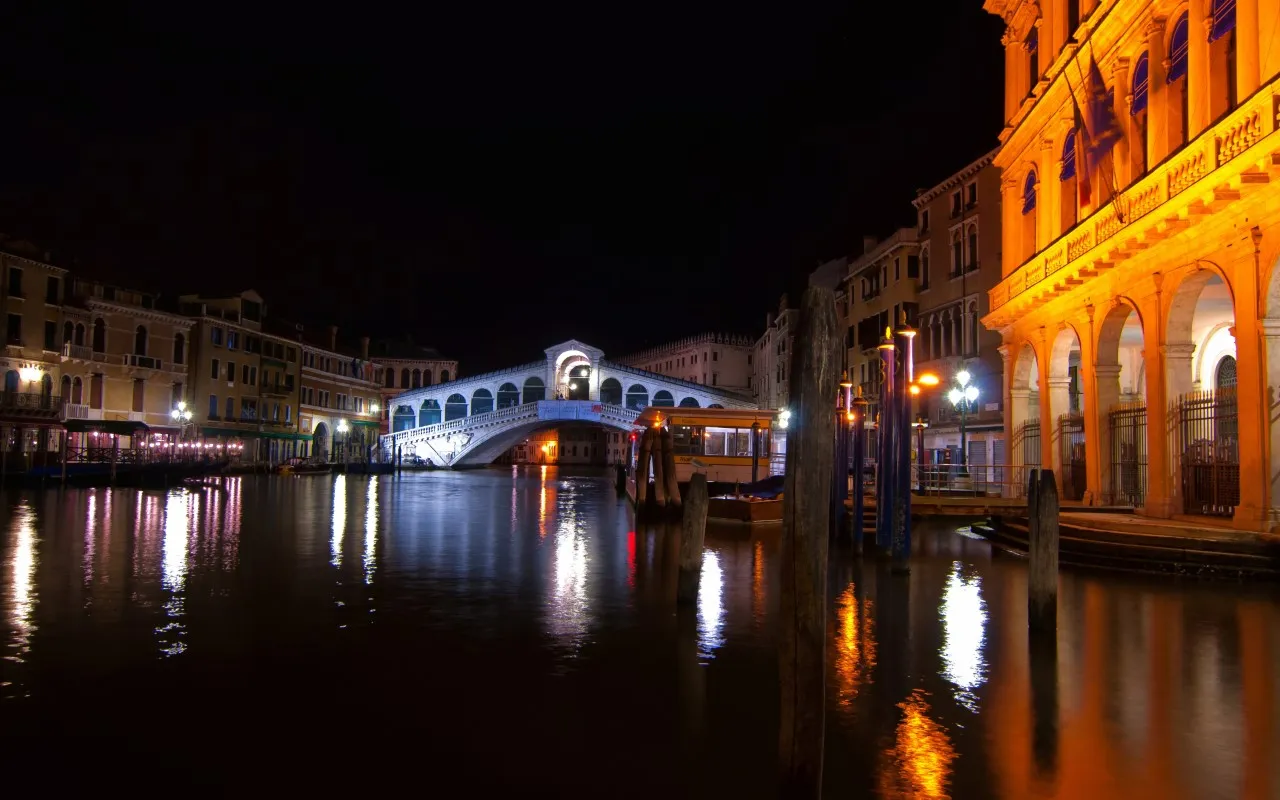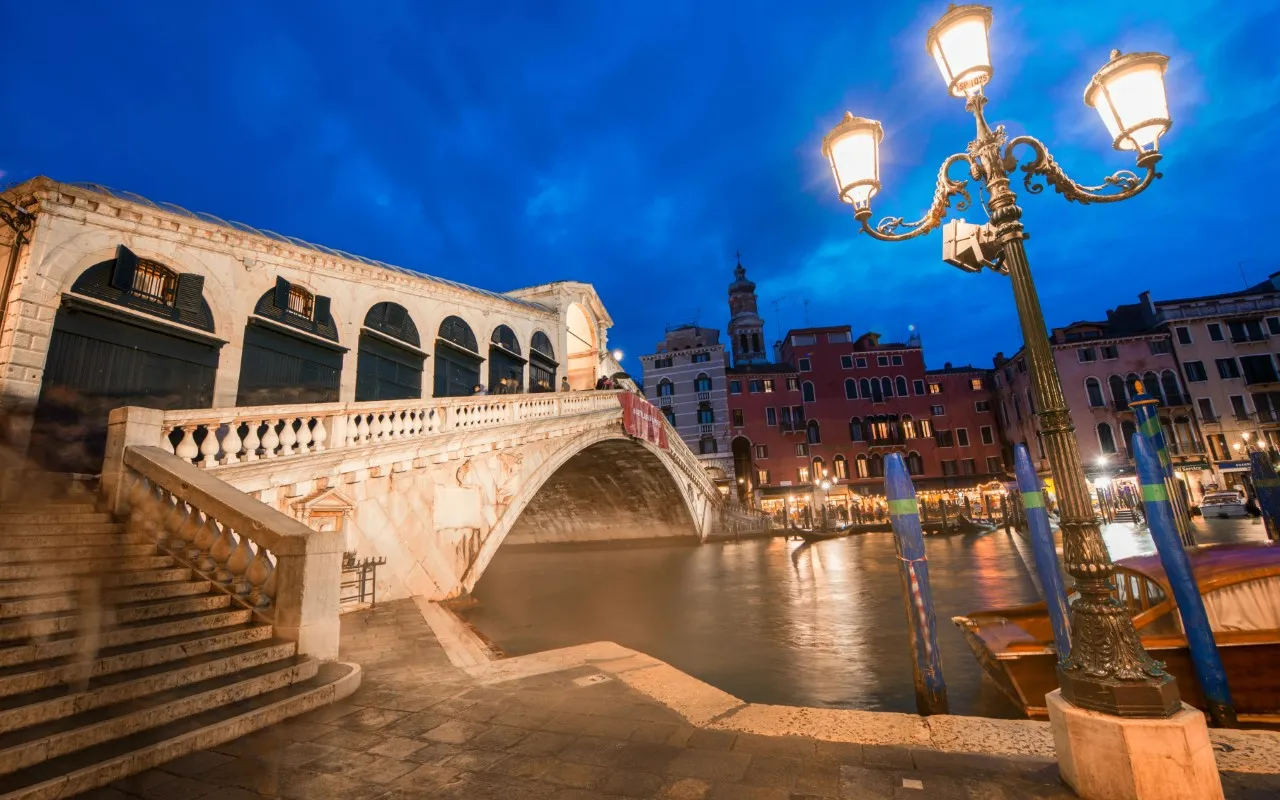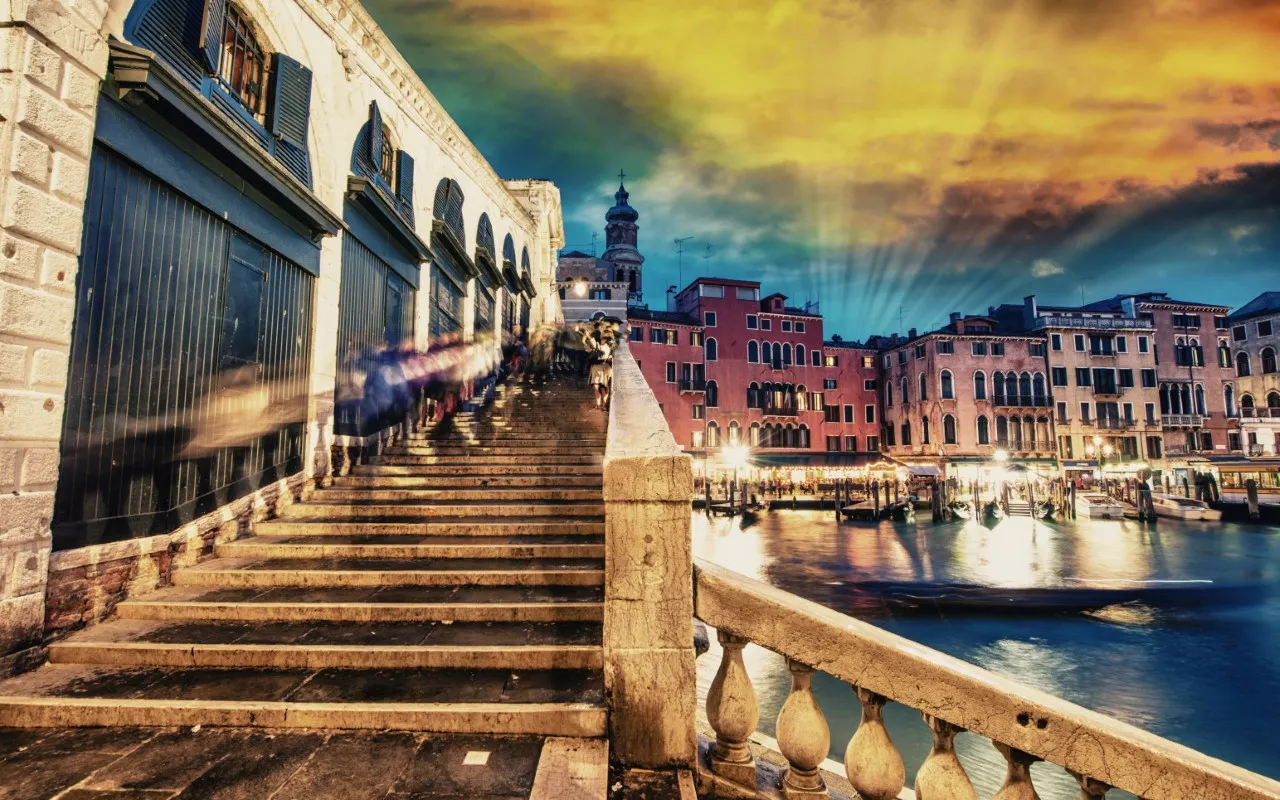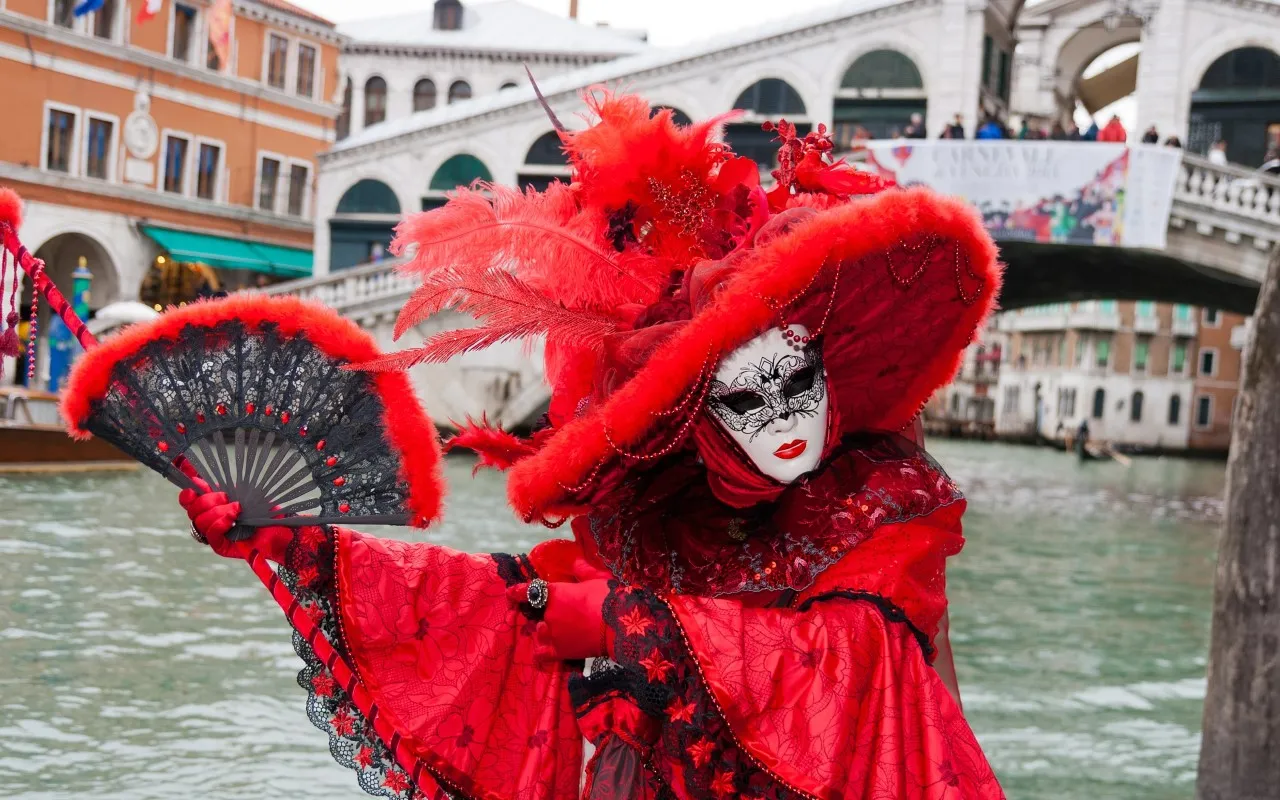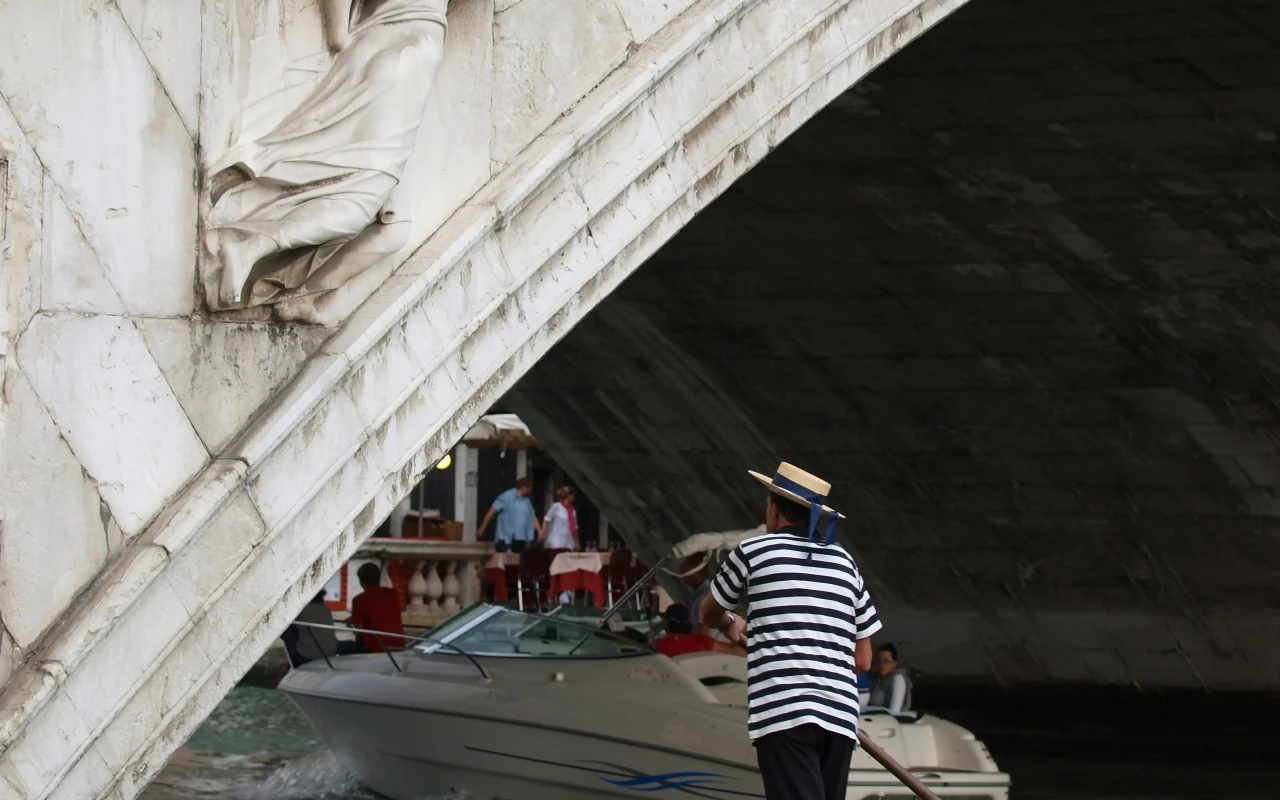Claim to Fame
The Rialto Bridge is the oldest and most famous bridge on the Grand Canal, offering postcard views and a vibrant pedestrian experience.
📌 Navigating Rialto Bridge : Answers to Frequently Asked Questions
- Washrooms: Public washrooms available nearby.
- Hours of Operation: Open 24 hours a day for visitors.
- Important Information: Beware of pickpockets in crowded areas.
- Admission Fee: No admission fee to visit the bridge.
- How Long to Visit: Visitors typically spend 1-2 hours at the bridge.
- Parking: Limited parking available nearby.
- Family Friendly: Family-friendly attraction with beautiful views.
- Photography: Great spot for photography enthusiasts.
- WIFI: Limited WIFI access in nearby cafes.
- Picnic Area: No designated picnic area on the bridge.
- Handicap Accessible: Not handicap accessible due to stairs.
- Pets: Pets are not allowed on the bridge.
- Guided Tours: Guided tours available for an additional fee.
- Restaurant or Cafe: Several restaurants and cafes in the area.
- Gift Shop: Gift shops selling local souvenirs.
Photos of Rialto Bridge
A walk across the Rialto Bridge connects you to the heart of Venice — both geographically and historically. This graceful stone span has welcomed merchants, artists, and travelers for over 400 years.
What to Expect
You’ll find a bustling mix of tourists and locals browsing souvenir stalls or pausing to snap views of gondolas and vaporetto gliding underneath. The central staircase is flanked by shops, while the outer lanes provide sweeping canal views.
Background and Cultural Context
Built between 1588 and 1591, the current stone bridge replaced earlier wooden versions. Designed by Antonio da Ponte, it was considered an engineering marvel of its time. The bridge connected the bustling Rialto market area with the rest of Venice.
Best Time to Visit
Early morning is quietest. Sunset offers the best photo light and a romantic atmosphere as lights begin to shimmer on the water.
How to Get There
Easily reached via Vaporetto Line 1 or 2 — get off at Rialto stop and you’re steps away.
Photo Opportunities
Capture the bridge from the water level, from neighboring bridges, or from the top itself. Sunset, reflections, and gondola traffic all make for classic shots.
Travel Tips
- Watch for pickpockets in crowded times.
- Combine your visit with a trip to the nearby Rialto Market.
- Be patient — it’s a popular spot but worth waiting for the right light.
FAQs
Is the Rialto Bridge free to cross?
Yes — it’s open to pedestrians at all hours.
Are the shops open year-round?
Most are, especially during high tourist seasons.
Is there an elevator or ramp?
No — stairs only.
Final Thoughts
Crossing the Rialto Bridge is like stepping through a living painting. Whether you're watching the sun rise over the Grand Canal or window-shopping amid centuries of history, it's a timeless Venice moment you’ll never forget.

